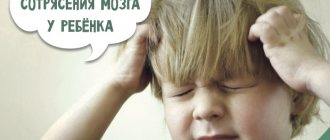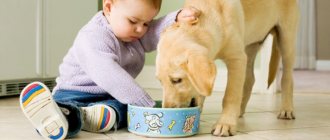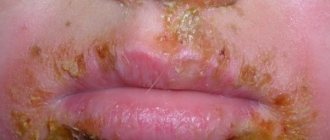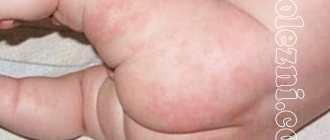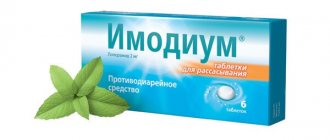Medical examination of doctor Daria Alexandrovna Afonina (Doctor of Medicine, Pediatrics) Author Lidiya Mishcherina (journalist)
An ear infection can cause ear inflammation, trouble eating, and fever in babies. There are different types of ear infections, but young children are most susceptible to middle ear disease, also called otitis media, and several pathogens can cause this condition. So what are they? Knowing these reasons can help you prevent ear infections in babies. Mentalar will tell you the likely causes of an ear infection, as well as how to identify and eliminate them through treatment and home remedies.
What is an Ear Infection in Children?
To understand ear infections, you need to understand the anatomy of the human ear. The human ear consists of three parts - the outer, middle and inner ear. While the outer ear and inner ear are isolated, the middle ear is connected to the nasal cavity through a tube called the eustachian tube. The tube is designed to equalize air pressure and drain fluid from the middle ear into the nasal cavity. The tube remains closed for the most part, but opens during certain functions such as swallowing or sneezing.
The connection to the sinus cavity exposes the middle ear to several bacteria and viruses that cause upper respiratory tract infections. The microscopic pathogen can squeeze through and penetrate the closed Eustachian tube into the middle ear. Here it attacks the mucous membranes of the middle ear, causing an infection called otitis media.
There are three types of middle ear infections:
- Acute otitis media (AOM): The middle ear is affected by an infection caused by bacteria or a virus, causing stabbing pain and discomfort.
- Otitis media with effusion (OME): mucous secretions from the middle ear accumulate inside and become infected with pathogens, causing an infection.
- Chronic Otitis Media with Effusion (COME): When mucus continually becomes trapped and infected in the middle ear, causing repeated infections.
When ear disease occurs in both ears, it is called a bilateral ear infection or double ear infection. It is important to know the cause of an ear infection to better understand it.
Types of disease
Our ear consists of three areas: outer, middle and inner. The first is the visible part of the ear, which in everyday life we call the ear. The middle and internal sections are not visible and have a complex structure. The appearance of acute inflammation of the ear in children can affect each of its parts, so the diagnosis is divided accordingly into external, media and internal otitis.
Two thirds of recorded cases of the disease are acute otitis media. In children under one to two years of age, this percentage is even higher. Since pathogenic microorganisms enter the middle ear from the nasopharynx.
Acute inflammation of the middle ear is represented by catarrhal, exudative and purulent stages. Catarrhal inflammation is considered an acute inflammation of the initial stage. During this period, the patient begins to feel congestion in the ear and hearing loss. In the exudative form, a viscous secretion is formed - it is this that accumulates that causes pain. A distinctive feature of the acute process of this type of inflammation is suppuration from the ear. This is the most severe type of the disease, accompanied by high fever.
If acute otitis media in children is not treated, the development of internal otitis media begins - labyrinthitis. For children, this condition is extremely dangerous and requires proper treatment. Otherwise, the consequences of otitis media can be very serious.
Based on the duration of the disease, otitis media is divided into acute, subacute and chronic. The acute course of the disease is characterized by a rapid onset, this condition lasts no more than three weeks. If otitis in a child lasts from three weeks to three months, we are talking about the subacute form. If an acute disease is not treated or the acute inflammatory process is treated incorrectly, the inflammatory process will become chronic. This disease will already last for more than three months.
What Causes Ear Infections in Children?
Ear infections in babies have several causes. However, some causes are much more common and widespread.
- Colds are the leading cause of ear infections in young children. A cold virus can pass through the eustachian tube along with mucus and enter the middle ear, causing an infection.
- Pneumonia and influenza . Pneumonia, influenza, or influenza pathogens can cause an ear infection.
- Sinus infection The swelling also obstructs the drainage of secretions from the middle ear, causing pain and infection.
- Tonsillitis is an infection of the pair of tissues in the tonsils located on either side of the throat. Tonsillitis caused by streptococcus bacteria can quite often lead to otitis media.
- Adenoid Infection: The adenoids are connected to the tonsils and together are part of the lymphatic system, which plays a vital role in the immune system. The adenoid is located just behind the nasal cavity, and infection in it causes inflammation of the tissue and puts pressure on the eustachian tube, eventually blocking it. Trapped fluids in the middle ear become infected with bacteria.
- Acid reflux: An ear infection can result from a complication of acid reflux, also known as gastroesophageal reflux disease (GERD). The clogged stomach contents can enter the nasal cavity through the larynx, which connects the nasal cavity to the throat. From the nasal cavity, the stomach contents reach the middle ear, where they cause infection.
- Sore throat infection: The bacteria or virus that causes a sore throat infection (other than tonsillitis) can also cause otitis media.
- Allergies: General allergies to airborne irritants can cause nasal inflammation. The inflammation traps mucus in the middle ear, where a bacterial infection can develop in the secretions.
- Milk accumulation in the eustachian tube: If the baby drinks from a bottle while lying on his back, milk/formula may drain into the middle ear from the larynx. The milk or formula builds up and causes a middle ear infection, as well as pain and inflammation.
Some young children are at higher risk of developing a middle ear infection than others.
Who's in Danger?
The following groups of babies may be more susceptible to developing a middle ear infection:
- Premature birth : Pediatricians note that premature babies are at higher risk of developing middle ear infections. The high risk is associated with the slow development of the immune system.
- Exposure to smoke and pollution: Chronic exposure to tobacco smoke and car runoff makes babies more susceptible to ear diseases.
- Toddlers in Daycare: Toddlers who spend most of their time in daycare centers have a higher risk of getting colds and throat infections, which can lead to ear infections.
It is important to recognize the symptoms of an ear infection in babies so that prompt treatment can be initiated to reduce discomfort.
What are the Symptoms of an Ear Infection in Children?
A baby with an ear infection will show the following signs of illness.
- Fluid discharge from the ear: Clear or yellowish discharge from the ear may indicate pus, which is a collection of white blood cells attacking a pathogen.
- Bad ear odor: Bad smell comes from the ear canal, even if your baby is otherwise clean. The odor comes from infected middle ear fluid.
- Ear pulling due to pain: Your baby will pull or pinch the ear due to severe ear pain and discomfort.
- Fever: An ear infection may cause a fever without any signs of other visible illness. This means that the baby would otherwise appear fine. A fever due to an ear infection may be higher than 100.4°F (38°C).
- Loss of appetite: A swollen eustachian tube can cause pain when swallowing due to high pressure in the middle ear. Thus, the baby experiences loss of appetite and lack of interest in food.
- Nausea and vomiting. Young children may also experience a persistent feeling of nausea or vomiting, which is most likely due to pressure in the eustachian tube.
- Poor response to sounds: Since the middle ear is blocked by infected fluids, sound waves do not reach the inner ear effectively. This means that your baby will have trouble listening and responding to sounds correctly.
- Loss of balance: An inflamed middle ear can put pressure on the labyrinth, which is the part of the inner ear responsible for maintaining the body's balance. Pressure on the labyrinth can impair its function, leading to loss of balance. And the baby will walk unsteadily or zigzag.
- General irritability and sleep problems: Your baby will seem irritable and fussy if he has trouble sleeping due to severe ear pain. Lying down, every time the baby turns his head towards the infected ear, he squeals in pain.
Take your child to the doctor to find out the exact cause of the ear infection.
How to recognize otitis media in a baby
Purulent inflammation of the middle ear in young children, as a rule, manifests itself as a sudden sharp deterioration in the child’s well-being. The baby's condition can rapidly deteriorate over a short period of time.
Parents notice that the baby’s mood has changed - he began to cry more often, his sleep and appetite have worsened. The main feature of childhood otitis is that a child under three years of age cannot yet understand and describe to adults what he feels.
In order to suspect the disease in time and begin treatment, elders should especially carefully monitor the baby . Quite often, children themselves point out the problem area when they try to scratch it or simply touch it. In the case of otitis, the baby may turn his head for no reason or pull the outer ear with his hand.
In addition, an acute purulent process in the ear has the following symptoms:
- Sudden jumps in body temperature, up to 40˚C;
- Sleep disturbance and refusal to eat;
- The child prefers to sleep on the side of the affected ear;
- Nausea and stomach pain;
- Unbearable headache;
- Symptoms of general intoxication of the body;
- Disorders in the gastrointestinal tract;
- Difficulty in nasal breathing;
- Sore throat;
- Children over 2 years old are reluctant to play games and become inattentive;
- Vomiting;
Important to remember! The faster parents recognize otitis media in their child, the faster it will be possible to select adequate treatment. Inattention to a child’s complaints is a waste of precious time and aggravation of the inflammatory process.
How are Ear Infections in Children Diagnosed?
The pediatrician uses the following procedures to determine whether an ear infection is present:
- Ask questions about your baby's medical history: The doctor will ask you about your baby's medical history to see if he has had a cold or throat infection recently. Colds and throat infections usually lead to ear infections.
- Ear examination with an otoscope: The doctor inserts a specialized camera called an otoscope into the ear canal to examine the eardrum. Redness or inflammation of the eardrum indicates an ear infection.
- Acoustic reflectometry: A pneumatic otoscope sends short bursts of air into the eardrum. A healthy eardrum flutters with air, but an infected middle ear remains stiff. This procedure is called acoustic reflectometry.
- Tympanometry: A tiny speaker with a sensor is placed in the ear canal and sound waves of different frequencies are emitted. The sensor measures the movement of the eardrum at various frequencies. The degree of movement of the eardrum can determine the severity of the ear infection. Tympanometry requires the patient to remain still and not speak. Therefore, it is better suited for older children who understand the instructions.
- Tympanocentesis: In very rare cases, a doctor may puncture the eardrum to collect infected fluid from the middle ear. This is called tympanocentesis, and the fluid is sent for laboratory analysis to determine the cause of the ear infection. This diagnosis may be a last resort when a doctor cannot determine the cause of an ear infection.
Depending on the cause of the ear infection, your doctor will suggest treatment options.
Causes of otitis media in children?
The inflammatory process in the hearing aid can develop under the influence of external factors such as:
- mechanical damage - due to a blow to the ear, injury to the ear canal during cleaning, penetration of a foreign object into the ear canal;
- bacterial infection - often formed against the background of the penetration of pathogenic microorganisms into the hearing aid during an inflammatory process in the nose or throat (in childhood, the anatomical structure provides for communication between the pharynx, nasal and ear cavities, as a result, ear inflammation is much more common in children compared to adults );
- hypothermia - when cold water penetrates the ear canal, the child is in a draft for a long time or walks in the cold season without a hat.
How to Treat Ear Infection in Children?
The following treatment procedures can be used to treat ear infections in young children:
- Antibiotics: A course of antibiotics is prescribed along with ear drops to relieve pain and inflammation. The length of the course of antibiotics and the type of antibiotics depend on the severity of the ear infection and the age of the baby. Common antibiotics prescribed for ear infections are cefprozil and amoxicillin. If your baby has a fever, fever-reducing medications such as acetaminophen and ibuprofen will be prescribed.
- Tympanostomy tube: If your baby has recurring ear infections, your doctor may recommend inserting a tympanostomy tube into the ear. These tubes range from 1 to 1.5 mm in length and are made of plastic. It is surgically inserted into the eardrum to allow fluid to pass out of the middle ear. As fluid enters the ear canal, the middle ear becomes less susceptible to ear infections. A tympanostomy tube can last anywhere from six months to three years before they fall off on their own. If the baby still does not improve, then a new tube is inserted again. This treatment is a long-term procedure and is carried out only for babies with severe chronic otitis media that recurs for three months in a row.
- Adenoid or tonsil removal: If a chronic ear infection is the result of a recurrent infection of the lymphoid or tonsils, your pediatrician will remove tissue to provide relief.
Alternative medicines such as homeopathy can be tried, but only with caution. Most medical experts do not recommend chiropractic adjustments for treating ear infections because there is no strong scientific evidence that the treatment is effective.
In most cases, the baby does not require any treatment, and the ear disease goes away on its own. Even antibiotics are prescribed only after several days of monitoring the baby without medication. However, treatment is vital to prevent complications from occurring.
What are the Complications of Ear Infection in Children?
If ignored and left untreated, ear infections can lead to the following complications in babies.
- Rupture of the eardrum: Constant pressure can cause the eardrum to rupture and rupture. Although a ruptured eardrum can heal on its own, it will cause severe pain and reduce your ability to hear.
- Mastoiditis: The bone of the skull under the ear is called the mastoid process, and chronic middle ear disease can cause mastoiditis. The mastoid process is hollow and has air pockets that drain into the middle ear, making the bone susceptible to disease.
- Cholesteatoma is an abnormal collection of cells just behind the eardrum in the middle ear. The cells form thickened tissue that puts pressure on the bones of the middle ear, causing them to become damaged.
- Labyrinthitis: Chronic middle ear disease can cause pathogens to enter the inner ear and infect a vital bone in the inner ear called the labyrinth, causing labyrinthitis. The bone is critical to maintaining body balance and hearing, so any disease that affects it can seriously impair hearing and movement.
- Meningitis: Pathogens from the middle ear can travel to a bone in the skull called the mastoid, where they can travel to the brain. Once in the brain, the pathogen attacks the outer layer of the brain, called the meninges, causing meningitis. This condition is rare and can occur if the ear disease is completely ignored and left untreated.
Treatment is important, but parents also wonder if natural home remedies relieve the pain caused by an ear infection.
What is otitis media?
Otitis media means any inflammation of the ear. There are:
- The outer ear (pinna and external auditory canal to the eardrum) inflammation of which will be otitis externa. Here, boils caused by staphylococci and fungal infections of the ear canal come first.
- The middle ear begins behind the eardrum and includes the tympanic cavity, Eustachian tube, mastoid cells and antrum. Inflammation in this department is called otitis media. This is the most common ear pathology in children.
- Internal otitis is also called labyrinthitis. In this case, inflammation affects the cochlea, its vestibule or semicircular canals.
What are Home Remedies for Ear Infections in Young Children?
An ear infection can only be cured with timely medical attention. However, you can try the following ways to reduce the intensity of the pain:
- Sleeping with a sore ear up. This is especially useful when the baby has disease in only one ear. Let your baby sleep with the infected ear elevated, that is, on the side opposite the affected ear. Fluids from the middle ear drain into the nasal cavity under the influence of gravity, relieving pain and pressure.
- Use warm compresses. Place a damp, warm cloth over your ear to reduce the pain.
- Keep your baby's nose clean. If your baby has an ear infection as a result of a cold, he or she will likely have a runny nose. Nasal secretions can carry more bacteria from the nose to the middle ear. Therefore, it is important to prevent mucus from getting into your nose. For younger children, use a nasal suction cup to suck out mucus. For older children, you can use a handkerchief to gently squeeze the mucus out of the nostrils.
Remember, experts do not recommend using any herbal or natural remedies to treat ear infections in young children. Also, do not pour tea tree oil or hydrogen peroxide into your baby's ear canal or insert earplugs to relieve pain. Use painkillers only after consulting your pediatrician.
Also, take care to prevent ear infections from recurring to protect your baby from pain.
Treatment of acute otitis media in children

You should contact your pediatrician immediately after the first symptoms of otitis media appear in children. If parents are not sure that the child has this particular disease, then it is still not worth the risk. The doctor can differentiate acute otitis media in children from other diseases, make an accurate diagnosis and immediately begin treatment. If the pediatrician has any suspicions or uncertainty about the correctness of his diagnosis, he will refer the patient for additional examination to an otolaryngologist.
How to Prevent Ear Infections in Children?
Use these measures to prevent ear infections in toddlers:
- Protect your baby from pathogens. Ear disease is often the result of an infection that begins in the nasal cavity or throat. These infections occur as a result of poor defense against pathogens. When you protect your baby from pathogens that cause illnesses like colds, sore throats, etc., you are also protecting him from ear infections. It all starts with good hygiene. For example, teach your child to wash their hands after playing, cover their mouth and nose if someone nearby sneezes, and always wash their hands if they pick their nose. Also, keep your baby's personal belongings clean to minimize the risk of exposure to a pathogen that can cause an ear infection.
- Drink from a cup, not a bottle: The Academy of Pediatrics says bottle drinking should be stopped in early childhood. Instead, you should encourage your baby to drink milk or formula from a sippy cup. In fact, pediatricians recommend introducing open cups as early as 12 months of age. Sleeping with milk or formula has been widely linked to ear infections in toddlers.
- Immunize your baby against pathogens that cause upper respiratory tract infections, as they can also lead to ear infections. For example, immunization against pneumonia and influenza has been shown to prevent ear infections in toddlers.
- Be careful about allergies : If you know your little one is allergic to something, then be proactive about preventing them from coming into contact with it. Ear disease can occur as a byproduct of a previous respiratory allergy.
- Preventing exposure to pollution and tobacco smoke: Studies have shown that young children exposed to secondhand smoke are more likely to have recurrent ear infections. Car pollution also has similar effects. Therefore, keep your baby away from places where he may inhale car waste or tobacco smoke.
- Breastfeed your baby: Pediatrics recommends breastfeeding even after the first birthday, while the World Health Organization (WHO) recommends breastfeeding throughout the preschool period, even beyond the age of two. Experts say breastfeeding is vital to protecting your baby from a range of pathogens, including those that can cause ear infections. The study found that children who were breastfed over the age of nine months were 53% less likely to develop ear infections before the age of six. This means that breastfeeding not only protects your baby now, but also provides significant long-term protection against ear infections.
Parents may have several questions about ear diseases in babies. We will answer these questions in the next section.
Ear disease in a child
Last modified 02/15/2017
Ear diseases affect not only adults, but also children. Moreover, children are susceptible to inflammation of the hearing aid much more often, so ear diseases at a young age take second place, after ARVI. The reason for this is the very short and fairly wide eustachian tube. Pathogenic microbes enter the child’s body through the nasopharynx. As soon as the nasal cavity becomes infected, the virus spreads further along the Eustachian tube to the ear, thereby provoking inflammatory processes.
The complexity of the process is aggravated by the fact that if the baby is too small, it is difficult for him to explain what is really bothering him. So he resorts to crying and screaming. Parents will be able to independently find out the cause of the pain by lightly pressing on the tragus.
The tragus is the cartilaginous part of the outer ear, which is located in front of the entrance to the auricle. If after the manipulations your child begins to cry and wave his arms and legs, it means that his ear is still bothering him. In any case, the child should be shown to a specialist. You shouldn’t put off ear pain for a long time, because... a viral infection can aggravate the child’s situation and provoke, against the background of an inflammatory process in the ear, such serious diseases as meningitis, encephalitis, etc.
The deterioration of the disease can be diagnosed by purulent discharge from the ear, an increase in temperature against the background of the general lethargy of the child. The middle ear is most often affected by infection. Moreover, according to statistics, more than half of all children suffer from this disease before the age of one year; by the age of five or six, almost every child in his life manages to feel unpleasant pain symptoms in the ear area.
The types of ear diseases include:
- external diseases;
- average;
- inner ear.
Children are least likely to be infected in the outer ear, most often the middle ear. Diseases of the external ear include: eczema and cellulite. Diseases of the outer ear are often called “swimmer’s ear” due to the frequent penetration of water into the ears.
Otitis media includes inflammation caused by infectious bacterial viruses. The consequence of ear disease can be a cold, nasal congestion, redness of the throat, etc.
Children are least likely to suffer from inner ear disease, but if such a fact is identified, then the treatment here will be longer and more complex. One of the common forms of inflammation of the inner ear is called viral and bacterial labyrinthitis. This disease can be a consequence of an advanced form of otitis media or even transmitted in utero from a mother who had, for example, rubella in the first three months of pregnancy.
Treatment of ear diseases in children
To help your child cope with an ear disease, you should not put off a visit to the ENT doctor “on the back burner” so as not to worsen the baby’s situation. The doctor can determine the severity of the disease using a visual examination, otoscopy, or a general blood test. It is important to make a correct diagnosis in a timely manner and treat it immediately.
Most often, otolaryngologists resort to drug therapy: they prescribe painkillers, nasal drops (they reduce swelling of the auditory tube), if purulent otitis is detected, they prescribe antibiotics, and, if necessary, resort to surgery or physiotherapeutic procedures (laser therapy, pneumomassage, UHF).
Folk remedies for treating ears
- If your baby does begin to feel a little pain in the ear area at the initial stage, a warm compress or heating pad, a decoction of rose hips and nettles, or a collection of raspberry and black currant leaves can serve as quick help at home.
Recipe for a decoction of raspberries and black currants:
To do this, you need to take 1 tablespoon of the mixture and pour 1 glass of boiled hot water, cover, let stand for about 30-40 minutes and let the baby drink several times throughout the day.
2. Do not neglect warm baths, they will only be beneficial.
3. At the initial stage of otitis media, steam inhalation with eucalyptus and lavender oils will help perfectly.
To do this, add a few drops of oil to hot water, cover your head with a towel and bow your ear, which is bothering you over the steam.
4. Bay leaf is an excellent remedy for relieving minor pain.
It is finely crushed, poured with boiling water and left until the water turns dark yellow. Then a cotton swab is moistened in this tincture and placed in the sore ear. It needs to be changed every 1-1.5 hours.
5. Non-purulent otitis media can also be warmed with salt. To do this, put warm salt in a bag, apply it to the sore ear and warm it up.
Prevention of otitis in children
First of all, you should take care of the availability of hats during the cold season.
If your child goes to the pool, after swimming it is very good to wipe his ears dry. You can also cover your child’s ears when swimming with cotton swabs, previously lightly lubricated with cream.
Parents should teach their child to blow his nose correctly in advance, i.e. alternately pinching each nostril. After all, as you know, the precursor to otitis media is often nasal congestion.
In order to prevent ear disease in your child, it is worth taking a number of preventive measures, such as: healthy, sound sleep, walks in the fresh air, playing sports, hardening (How to properly harden a child), etc.
It is also necessary to carefully monitor your child’s adequate nutrition, because... a full range of vitamins and minerals consumed in a timely manner will increase immunity and protect your child from possible infections.
(Visited 78 times, 1 visits today)
By
FAQ:
Are ear infections in babies contagious?
No. Ear infections are not contagious. But the pathogen that may have caused the infection may be contagious. For example, if an ear disease is the result of pneumonia, then the pneumonia is contagious, but not the ear disease itself.
Why does my baby always get ear infections?
Babies have shorter, narrower, and more horizontal Eustachian tubes than adults, which makes it easier for bacteria to enter but makes it harder for fluid to leave the middle ear. Toddlers also have weaker immune systems than older children. These factors make them prone to recurring ear infections. However, if parents actively work at it, they can easily prevent chronic ear infections.
Can a young child travel by air with an ear infection?
No. Your baby should not travel by air if they have an ear infection, as changes in air pressure inside the plane can cause stabbing pain in the ear. Your baby can travel two weeks after he or she has completely recovered from the ear infection. The AAP recommends consulting with your pediatrician before flying with your baby within two weeks of an ear infection. If the doctor finds that your baby's ear is in good condition for air travel, he or she may recommend doing so.
Can swimming cause ear infections in babies?
Yes. However, the disease does not spread to the middle ear, but to the skin of the external auditory canal. The infection does not reach the middle ear and is limited to the outer ear. For this reason, the condition is called otitis externa or swimmer's ear. Otitis externa usually occurs when too much water gets into the ears because a child spends too much time in the pool. Damp conditions eventually cause bacterial and fungal invasion, leading to infection.
How long does an ear infection last in babies?
This completely depends on the extent of the ear infection. Pediatric experts say some babies improve within 24 hours without treatment, while in some cases the illness can last a week. In most cases, the doctor will wait 72 hours before administering antibiotics to see if the condition improves on its own.
Remember that ear infections can cause a lot of pain for your child, but they can also be easily prevented with precautions. Don't hesitate to consult your doctor right away if you suspect an ear infection. Prompt treatment and home care is all your baby will need to recover from an episode of ear infection.
If you have any other tips for preventing ear infections in toddlers, let us know in the comments section below.

